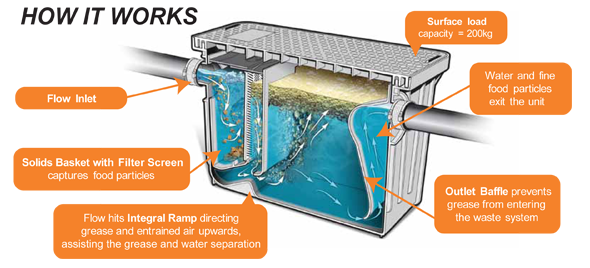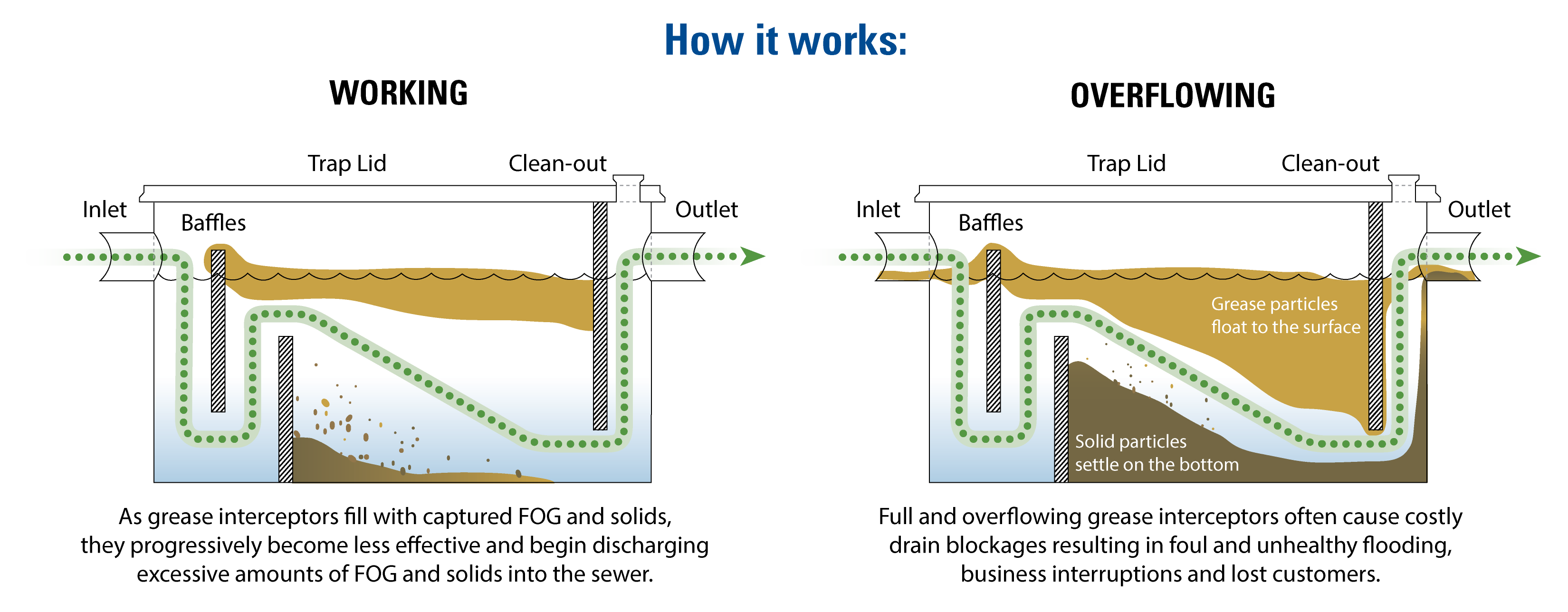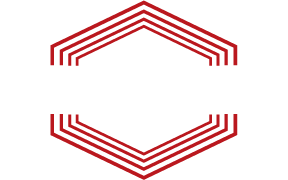How Your Grease Trap or Grease Interceptor System Works
When maintained properly, grease traps prevent kitchen grease and food waste from entering the city sewer system. Grease is a leading cause of sanitary sewer overflows, since it clogs sanitary sewer lines and ultimately causes line blockages. The result is all too frequent discharges of untreated wastewater into streets, homes and commercial enterprises. Ultimately these problematic waste streams enter our local waterways, where they cause further cleanup costs and restrict recreation, tourism and commerce. Your traps must be regularly emptied and periodically cleaned to prevent costly and dirty back-ups or over-flows.
 1. Your kitchen’s complete plumbing system, including sinks, dishwashers, floor-drains and mop-sinks, drains into the grease trap or grease interceptor system.
1. Your kitchen’s complete plumbing system, including sinks, dishwashers, floor-drains and mop-sinks, drains into the grease trap or grease interceptor system.
2. Wastewater flows into either an interior or exterior (usually in-ground) grease trap system. A baffle separates the inlet and outlet of the trap, keeping grease in.
3. Grease floats to the top of the grease trap, while solids settle on the bottom. The trap or interceptor must be vacuum pumped regularly by a skilled service provider to remove the entire contents of the trap.
4. Clean water then continues to flow into your sewer or septic system.
All of your grease trap waste is collected by our certified grease trap cleaning staff and sent to the Des Moines water treatment plant according to city and state regulations. Our advanced pump trucks use state-of-the-art pumps and hoses to remove both the floating grease and solid particles that settle on the bottom. If you have a grease trap that is outside of your building and holds thousands of gallons, you will need a company that has the pump strength, hose length, and tank capacity to efficiently remove the waste. Sweet Honey has everything you need to get the job done.
Here’s another diagram to help make sense of the inner workings of a grease trap:

